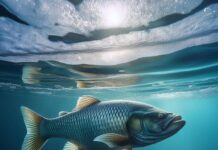Replace decoy weights, check. Locate steel shot shells, check. Make sure wader leaks are fixed, check. Buy 2017 hunting license, federal duck stamp, State Waterfowl permit and HIP permit, check .
Whew! The waterfowl hunter’s checklist is long, but luckily the wait for Kansas duck seasons is short: High Plains Zone – Oct. 7, 2017-Jan. 1, 2018 and Jan. 20-28, 2018; Low Plains Early Zone – Oct. 7-Dec. 3, 2017 and Dec. 16-31, 2017; Low Plains Late Zone – Oct. 28-Dec. 31, 2017 and Jan. 20-28, 2018; and Low Plains Southeast Zone – Nov. 11-Dec. 31, 2017 and Jan. 6-28, 2018.
Kansas lies in the middle of the Central Flyway, and there are several major wetlands that attract and hold migrating waterfowl. Ducks and geese rest and feed on the big marshes, and if rains flood shallow perennial wetlands, a large number of waterfowl will stage here, feeding in harvested crop fields.
The 19,000-acre Cheyenne Bottoms Wildlife Area tops the list of prominent Kansas wetlands, drawing hunters from across the U.S. each fall. The area can provide spectacular duck and goose hunting in October and November before its shallow waters freeze. Jamestown Wildlife Area in northcentral Kansas is a popular early-season hunting spot, and there are other smaller marshes scattered throughout central Kansas. Marais des Cygnes and Neosho wildlife areas in eastern Kansas usually attract very good numbers of mallards during the late seasons, and marshes on the upper ends of federal reservoirs in this part of the state will also hold birds.
Visit www.ksoutdoors.com for information about waterfowl hunting in Kansas, including regulations and a map of duck zone boundaries. You can also view the latest waterfowl reports for each of the public wildlife areas, and purchase licenses and permits.
For maps and waterfowl reports for the four national wildlife refuges in Kansas that provide waterfowl hunting opportunities (Kirwin NWR in Phillips County, Quivira NWR in Stafford County, Flint Hills NWR in Coffey and Lyons counties), visit www.fws.gov/refuges.
It takes a special dedication to be a waterfowl hunter because of the equipment and outdoor skills required. But for those who live and breathe it, there’s nothing better than watching the sunrise over a wetland on opening morning. Now, get back to your checklist. Time is running out.




